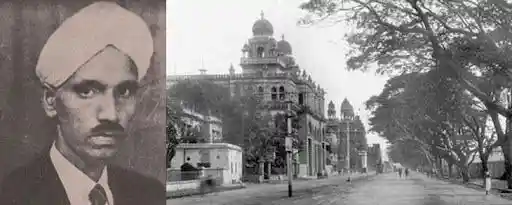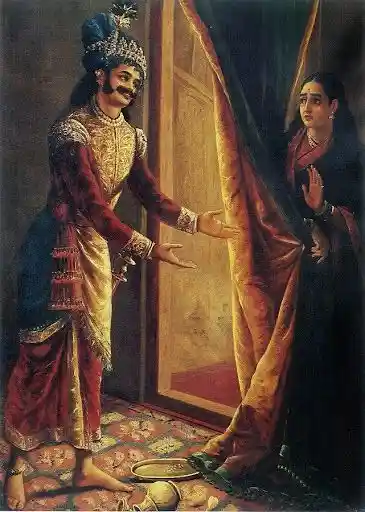Keechaka Vadham: The First Tamil Motion Picture
It's been over a century since the release of the first silent cinema in India. The foundation of what we call today the South Indian film industry happened through Keechaka Vadham, the first Tamil movie made by Rangaswamy Nataraja Mudaliar in 1917. A lot has been told between the lines of the silent feature and a lot is yet to unfold.

L: RANGASWAMY NATARAJA MUDALIAR 1885-1972; R: OLD MADRAS BEACH ROAD; Image Source: Wordpress
Over a century before, a dealer of automobile spare parts, Rangaswamy Nataraja Mudaliar from Madras became the father of the cultural colossus of Tamil cinema by making the first ever feature film of South India, Keechaka Vadham in the year 1917. It is said that often an ‘explainer’ was present in the cinema hall during its screening and while the silent film went on, the explainer narrated the dialogues to the audience from the title cards displayed along with the scenes from the film. The pioneer, Nataraja Mudaliar made six more films in his lifetime from his studio India Film Company.
Keechaka Vadham was produced by Mudaliar himself and it took five weeks to shoot the entire film. The screenplay of the film was written by C. Rangavadivelu. The screenplay was based on a chapter from the Virata Parva of the Hindu epic Mahabharata. The movie focuses on Keechaka or Kichaka, the commander-in-chief of the Matsya Kingdom ruled by King Virata, who tried to seduce and harass Draupadi, one of the protagonist characters of the Mahabharata. He was later killed by Bhima, one of Draupadi’s husbands, for his misdeeds. The central cast of the film was Jeevarathnam as Draupadi and Raju Mudaliar as Keechaka.
Nataraja Mudaliar was inspired after watching Dadasaheb Phalke’s Harishchandra in 1913 (the first feature-length Indian film) at the Gaiety Theatre now situated in Madras. After watching the film, Mudaliar learned film-making and photography from Poona-based British cinematographer Stewart Smith. Smith was known for his documentary work that featured Lord Curzon's viceroyship from 1899-1905.
Mudaliar even bought a Williamson 35 mm camera and a printer from a landowner from Thanjavur who shot the first aircraft landing on the Island Grounds of Madras. He built his production company, India Film Company, in 1915 with the help of business associates in Purasawalkam. It was the first production company and studio in South India One of his close friends of Mudaliar, Attorney C. Rangavadivelu assisted Mudaliar to write the script of the film. Mudaliar was mainly inspired by the paintings of Raja Ravi Varma to create his film on celluloid.
Keechaka Vadham took around Rs. 35,000 then, as its budget. As with the beginning of principal photography from 1916-1917, this film took around 35 to 38 days to get shot. Mudaliar bought his film stock roll from London with the help of a British man named Carpenter, who was then associated with the Kodak company in Bombay.
Nataraja Mudaliar himself handled the production, editing, and cinematography of the film. The film was taken at the standard speed of silent cinemas at that time i.e. 16 frames per second. The title cards of the film were written in Tamil, Hindi, and English. The English ones were written by Mudaliar himself, and the Tamil and Hindi ones were written by Sambandha Mudaliar and Devdas Gandhi.
Keechaka Vadham was first screened at the theaters of Elphinstone in Madras and earned a collection of 50,000 rupees and was later screened at various theaters in India, Burma, Ceylon, Singapore, and the Federated Malay States. The success of Keechaka Vadham inspired Mudaliar to make several more films mainly based on the stories of Hindu mythology. Through the hands of Mudaliar, the foundation of South Indian cinema was set and today it has reached the doorsteps of the global platform where it receives numerous praises from all around the world.

A PAINTING OF KEECHAKA AND SAIRANDHRI BY RAJA RAVI VARMA IN 1890; Image Source: Wikipedia


